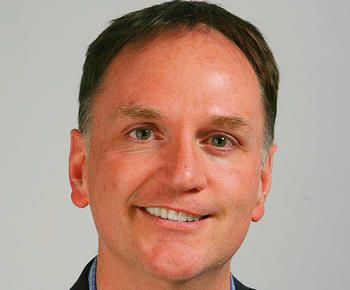Every morning, WMUR viewers get the new number: How many new cases of COVID-19 in New Hampshire?
On Friday, the story was that positive tests “have risen above 2,000 for the first time since late February.”
“New Hampshire is now averaging 237 new cases per day, the most since March 1,” WMUR added.
And as long as viewers keep in mind the word “cases” actually means “a positive COVID-19 test” and not an illness, the reporting is accurate.
But, many public health experts say, it is also largely irrelevant. Positive tests for asymptomatic people aren’t a problem. The significant number is the one that is also more rarely reported: Hospitalizations.
According to the state Department of Health and Human Services, on January 15 the seven-day average for COVID hospitalizations was 418 patients. On Friday it announced, “There are currently 12 hospitalized patients being treated for COVID-19.”
The national media are doing the same thing, touting positive tests but rarely talking about hospitalizations.
“It’s not over: COVID-19 cases are on the rise again in US,” was the headline from the Associated Press. “Some states, such as Rhode Island and New Hampshire, saw the average of daily new cases rise by more than 100 percent in two weeks,” the AP reports.
But the hospitalization number for COVID-19 patients (as opposed to patients who test positive for COVID-19) is largely unchanged.
Even the recent uptick in positive tests is unimpressive when compared to COVID-19’s overall trajectory. The national daily average last week was just under 36,000 positive tests, up 18 percent from two weeks earlier. But at the peak of the omicron surge, the daily average reached 800,000.
The same in New Hampshire, the daily average peaked at around 3,800 cases a day. That was 16 times higher than the current “surge.”
On Sunday, former FDA chief Dr. Scott Gottlieb put those numbers in perspective. “Right now, we’re at very low levels of infection. We have nine cases per 100,000 people per day. Those are levels that we haven’t seen since last June.”
And yet the Biden administration has extended the mask mandate for public transit, including airplanes — despite the fact that there has never been a single “super spreader” event reported from an airplane.
And the administration has extended its “pause on student loan repayments” until August 31, despite the low COVID numbers. That policy costs taxpayers more than $4 billion a month.
At the same time, the Biden administration is about to end the Title 42 authority at the border, put in place in response to the pandemic, because the CDC has ruled the COVID crisis is over.
New Hampshire Democrats also appear uncertain about their COVID policy. The New Hampshire Democratic Party and House Democratic leadership are suing Republican Speaker Sherman Packard, demanding that remote voting be allowed due to the high risk of COVID. But just over a week ago, their members packed into the party’s new campaign office in Manchester — virtually mask-free.
All four Democrats in the federal delegation have been out on the campaign trail, and all without masks at various times — even as the Biden administration is considering more federal spending on COVID relief. In fact, just last week, Democrats in Congress were pushing for an additional $22.5 billion in new COVID aid.
New York City’s mayor is forcing children ages 2-4 to wear masks, despite overwhelming evidence young children face little risk from the virus. Philadelphia, a deep-blue city, is reinstating its indoor mask mandate on Monday. New Hampshire’s statewide mask mandate ended almost exactly one year ago, on April 16, 2021.
According to a new working paper presented to the National Bureau of Economic Research, New Hampshire’s COVID-19 outcome was seventh-best in the nation. The evaluation was based on three variables: health outcomes, economic performance throughout the pandemic, and impact on education.
Pennsylvania ranked 42nd.





